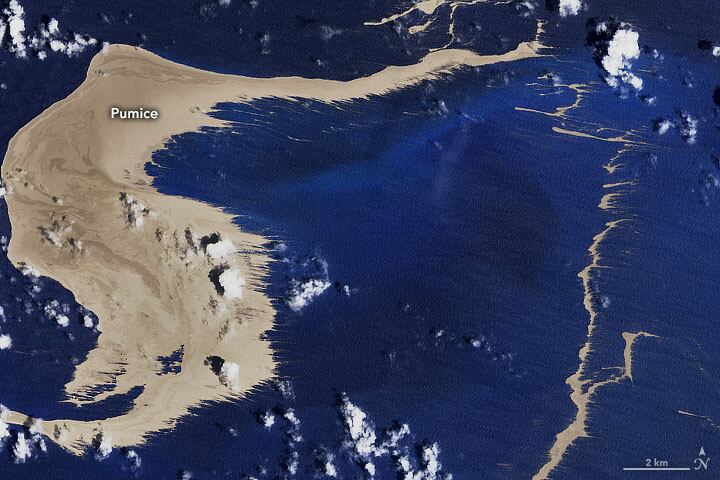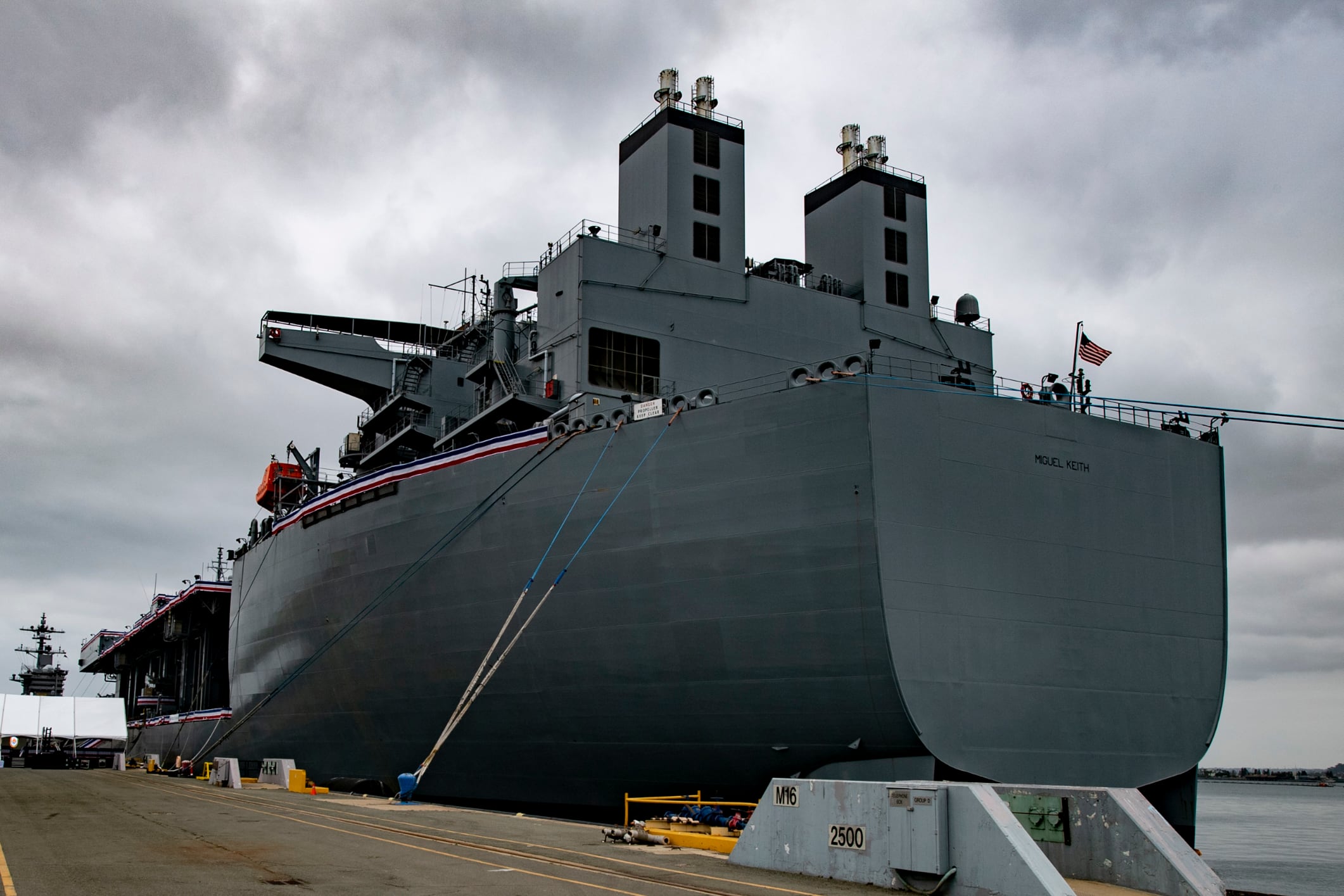The brand-new expeditionary sea base ship Miguel Keith was nearly sidelined last month after debris from a massive undersea volcanic eruption gummed up vital ship systems, according to Japan-based U.S. 7th Fleet.
Commissioned in May, Miguel Keith was operating off Japan when the remnants of the volcanic eruption made themselves known.
It began when Fukutoku-Okanoba, an undersea volcano about 800 miles southeast of Japan, erupted on Aug. 13, sending pumice stones and debris into the air and surrounding waters, an event believed to be the biggest of its kind in the area since World War II, according to the Navy.
The volcano’s summit sits just 80 feet below the surface, according to NASA, and satellite imagery soon revealed “expansive gray pumice rafts” floating in the surrounding waters.
“Pumice is one of the only types of rock that can float due to a combination of surface tension and the many air-filed holes and cavities found within the rock,” according to NASA. “Rafts of rock can drift in the ocean for months or even years.”

And while the dangers of pumice to ships like Miguel Keith are well-known, aviation and marine warning systems for such eruptions remain in development, according to NASA.
Miguel Keith soon encountered the pernicious pumice as it operated near Okinawa in late October.
Soon, pumice began clogging strainers on the ship’s sea chests, which bring in seawater for firefighting, equipment cooling and other needs, according to 7th Fleet.
Some of that debris was so small that it passed through the ship’s strainers and entered critical propulsion systems, Miguel Keith’s commanding officer, Capt. Troy Fendrick, said in a statement.
“Over time, pumice ingestion plagued virtually the entire engineering plant,” he said. “Clogs caused high temperatures in both port and starboard coolers.”
Such coolers are critical in moving water to cool propulsion and electrical generating equipment.
To make matters worse, that volcano pumice jammed up stern tube seal pumps and evaporators as well, which are used to make potable water, according to Fendrick.
RELATED

Engines on each shaft had to be shut down for nearly four days at a time so that the crew could disassemble and clean those vital parts.
Fendrick equated the work required to “a depot-level job” normally done in port.
“The fact that our crew was able to accomplish this at sea in such a short time, keeping us on station and ready to ‘fight tonight,’ and avoid costly damages and repairs, speaks to our warrior toughness, and our ability to adapt and sustain ourselves in the face of adversity,” Fendrick said.
Seventh Fleet officials said no other ships are believed to have been impacted by the pumice debris.
Miguel Keith is deployed to 7th Fleet with Amphibious Squadron 11.
Geoff is the managing editor of Military Times, but he still loves writing stories. He covered Iraq and Afghanistan extensively and was a reporter at the Chicago Tribune. He welcomes any and all kinds of tips at geoffz@militarytimes.com.




